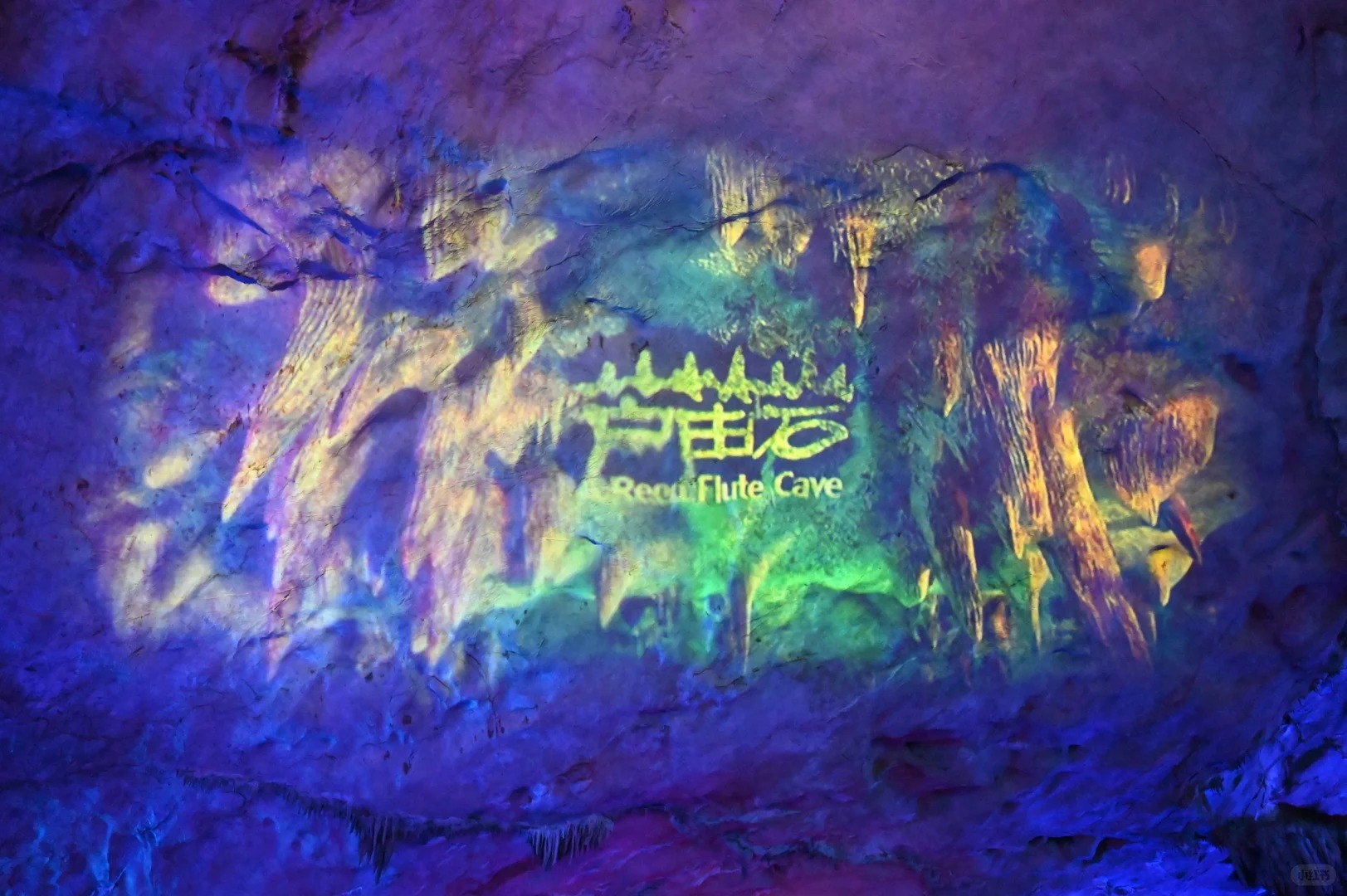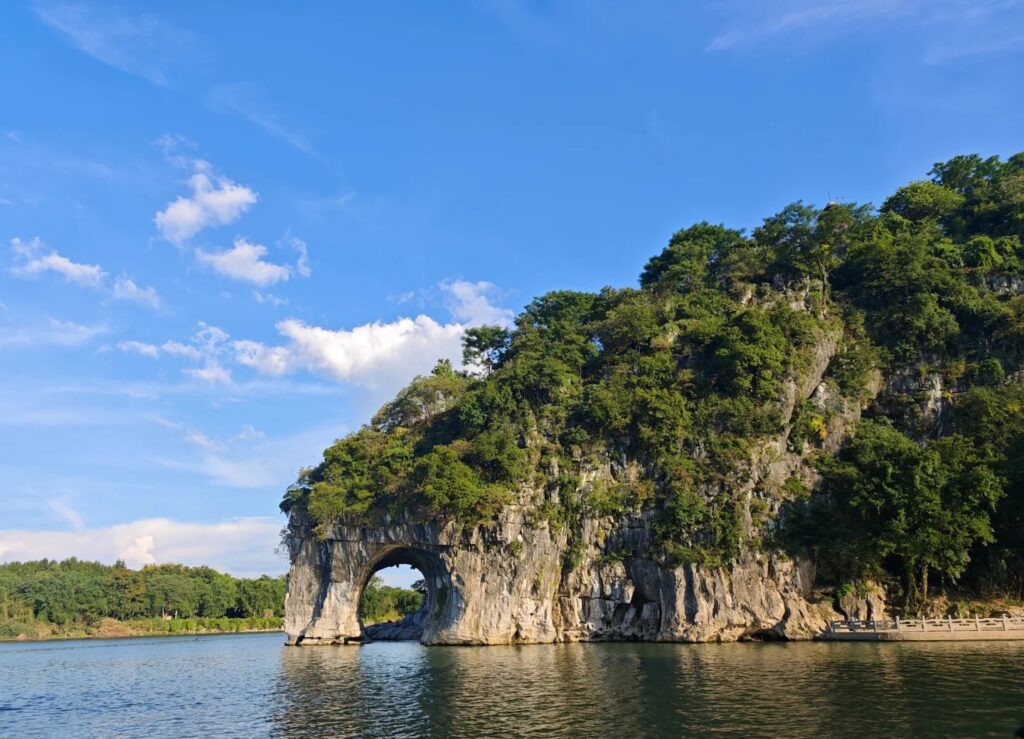Visiting Information
| Information | Details |
|---|---|
| Chinese Name | 芦笛岩 (Lúdí Yán) |
| Location and Address | Guangming Road, Guilin, Guangxi Province, China |
| Opening Time/Hours | 8:30 AM – 5:30 PM daily |
| Entrance Fee | CNY 120 (approximately USD 18) for adults CNY 60 for children under 1.2 meters tall |
| How to Get There | By Bus: Take bus 3 or 58 from Guilin city center By Taxi: About 20-minute ride from Guilin city center No metro service available in Guilin |
| Best Time for Visit | April to October for comfortable weather; avoid Chinese national holidays for smaller crowds |
| Contact Info | +86 773 2695801 Email: Not available |
Overview
Reed Flute Cave, known as the “Palace of Natural Arts,” is a spectacular limestone cave located in Guilin, Guangxi Province, China. This natural wonder is renowned for its stunning array of stalactites, stalagmites, and rock formations, beautifully illuminated by multicolored lighting. The cave stretches for about 240 meters and offers visitors a mesmerizing journey through a subterranean world of natural sculptures and ancient inscriptions.
Historical Background
The history of Reed Flute Cave dates back over 180 million years. It got its name from the reeds growing outside the cave, which were used to make flutes. The cave was first discovered in the Tang Dynasty (618-907 AD) and has been a popular attraction since then. Ancient inscriptions found inside the cave date back to 792 AD, indicating its long history as a tourist site. However, the cave was largely forgotten until its rediscovery in the 1940s by a group of refugees fleeing from Japanese troops. Since then, it has been developed into one of Guilin’s most popular attractions.
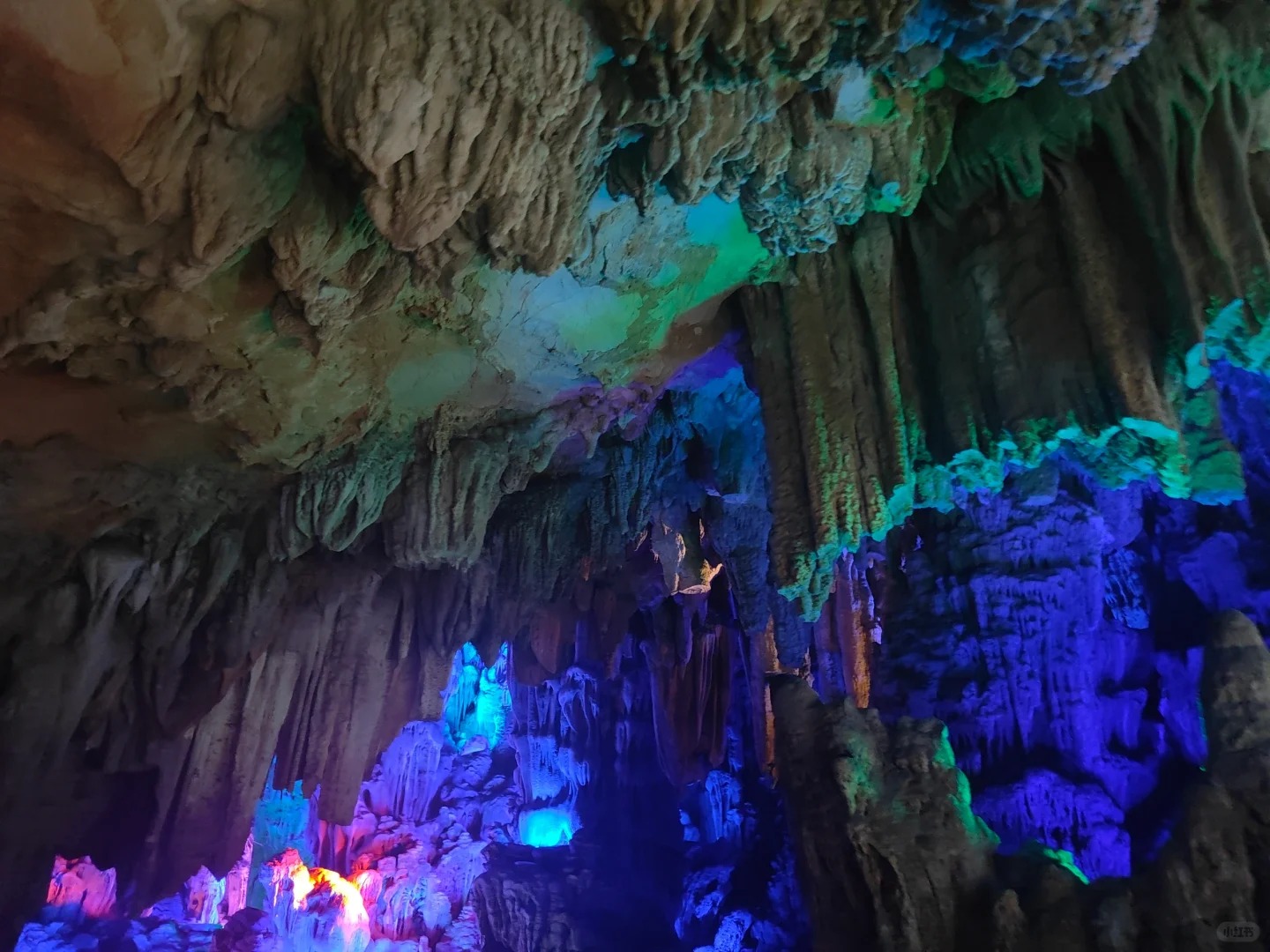
Architectural Features
- Natural Rock Formations: The cave is filled with an incredible variety of stalactites, stalagmites, stone pillars, and rock formations. These natural sculptures have been given imaginative names based on their shapes, such as “Crystal Palace,” “Dragon Pagoda,” and “Virgin Forest.”
- Lighting System: A sophisticated lighting system has been installed throughout the cave, using a spectrum of colors to highlight the natural features. This creates a magical, otherworldly atmosphere and brings out the intricate details of the rock formations.
- Underground Lake: At the end of the tour route, visitors encounter a serene underground lake. The still water reflects the illuminated stalactites, creating a stunning mirror effect that adds to the cave’s ethereal beauty.
- Ancient Inscriptions: Throughout the cave, visitors can see ink inscriptions on the walls dating back to the Tang Dynasty. These ancient graffiti provide a fascinating glimpse into the cave’s long history as a tourist attraction.
Cultural Importance
Reed Flute Cave holds significant cultural importance in China. It has been a source of inspiration for poets, artists, and writers for centuries. The cave’s natural beauty has been celebrated in numerous traditional Chinese paintings and poems. In modern times, it has become a symbol of Guilin’s natural wonders and plays a crucial role in promoting tourism in the region. The cave also serves as an important site for geological research, providing insights into the karst landscape formation process.
Surrounding Attractions
- Seven Star Park: Located nearby, this expansive park is named after the constellation-like arrangement of its seven peaks. It features beautiful landscapes, caves, and the famous Camel Hill. Visitors can enjoy walking trails, a zoo, and various cultural exhibitions within the park.
- Elephant Trunk Hill: This iconic landmark of Guilin is shaped like an elephant drinking from the Li River. It offers scenic views and houses several historic sites, including a pagoda and temple. The area around the hill is beautifully landscaped and illuminated at night.
- Fubo Hill: A short distance from Reed Flute Cave, Fubo Hill offers panoramic views of Guilin city and the surrounding karst landscape. The hill features interesting rock formations, ancient Buddha carvings, and a small cave at its base.
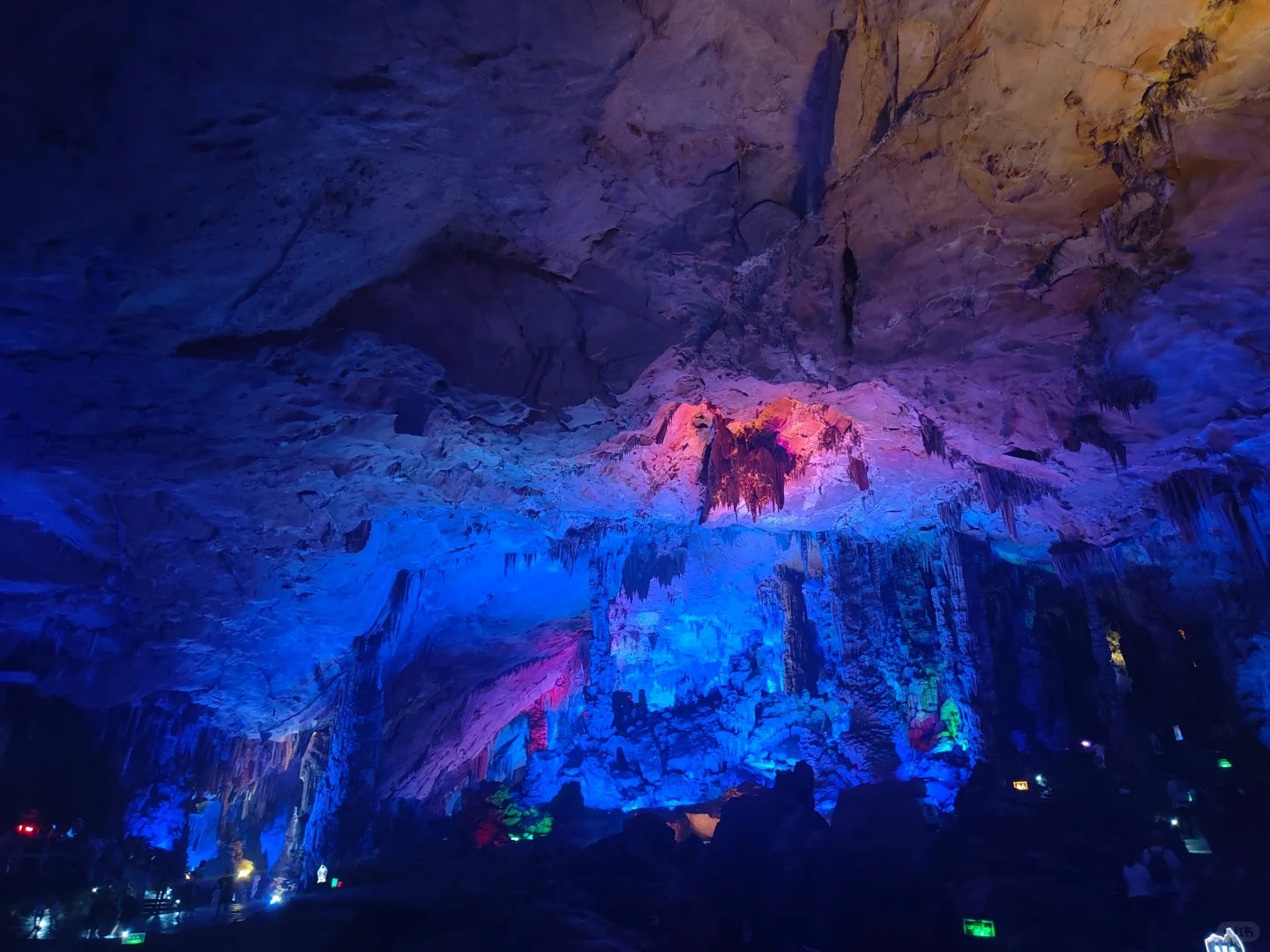
Photography Opportunities
- Illuminated Rock Formations: The colorful lighting inside the cave creates stunning photo opportunities. Capture the intricate details of stalactites and stalagmites enhanced by the vibrant illumination.
- Underground Lake Reflections: The mirror-like surface of the underground lake offers beautiful reflection shots, particularly of the illuminated ceiling formations.
- Cave Entrance: The lush vegetation surrounding the cave entrance provides a stark contrast to the subterranean world inside, making for interesting composition shots.
Modern Importance
- Tourism Hub: Reed Flute Cave is a major tourist attraction in Guilin, contributing significantly to the local economy and providing employment opportunities for the community.
- Geological Research: The cave serves as an important site for studying karst topography and cave formation processes, attracting geologists and researchers from around the world.
- Cultural Preservation: As a site with ancient inscriptions and a long history, the cave plays a role in preserving and showcasing aspects of Chinese cultural heritage.
- Environmental Education: The cave offers visitors a unique opportunity to learn about cave ecosystems and the importance of preserving natural geological formations.
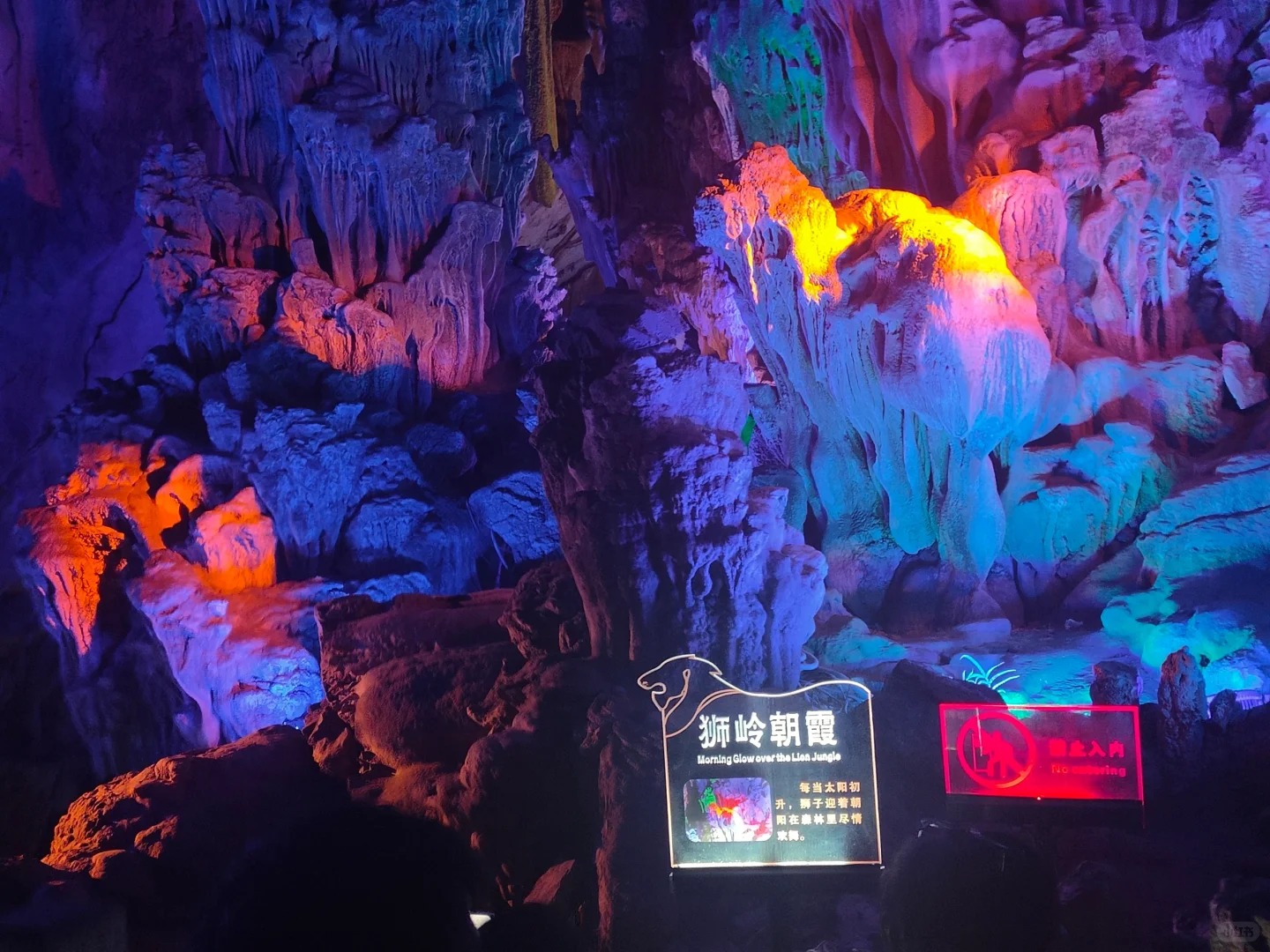
FAQ
- What is Reed Flute Cave famous for?
Reed Flute Cave is famous for its stunning limestone formations, colorful illumination, and ancient inscriptions. It’s often called the “Palace of Natural Arts” due to its breathtaking natural beauty. - What’s inside Reed Flute Cave?
Inside Reed Flute Cave, visitors can see a variety of stalactites, stalagmites, stone pillars, and rock formations illuminated by colorful lights. There’s also an underground lake and ancient inscriptions dating back to the Tang Dynasty. - Is Reed Flute Cave free?
No, Reed Flute Cave is not free. There is an entrance fee of CNY 120 for adults and CNY 60 for children under 1.2 meters tall. - Is Reed Flute Cave worth visiting?
Yes, Reed Flute Cave is considered worth visiting. It offers a unique and visually stunning experience, showcasing the natural beauty of limestone caves enhanced by creative lighting. It’s one of Guilin’s most popular attractions. - What to do in Reed Flute Cave?
In Reed Flute Cave, visitors can take a guided tour to see the various rock formations, enjoy the colorful light show, look for ancient inscriptions, take photographs, and learn about the cave’s geology and history. - How do I get to Reed Flute Cave in the local city?
In Guilin, you can reach Reed Flute Cave by taking bus 3 or 58 from the city center. Alternatively, you can take a taxi, which is about a 20-minute ride from downtown Guilin. - How to visit Reed Flute Cave?
To visit Reed Flute Cave, purchase tickets at the entrance or through a tour operator. Join a guided tour, which typically lasts about an hour. Wear comfortable shoes as the path can be slippery. Photography is allowed, but flash is usually prohibited. Consider visiting during off-peak hours to avoid crowds.


